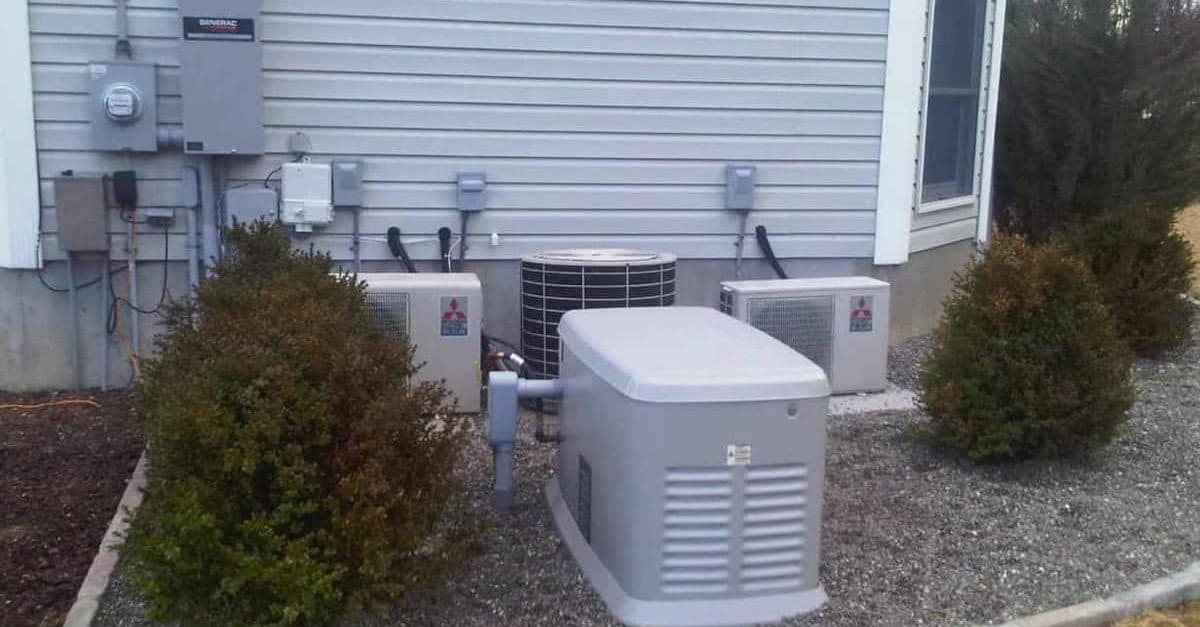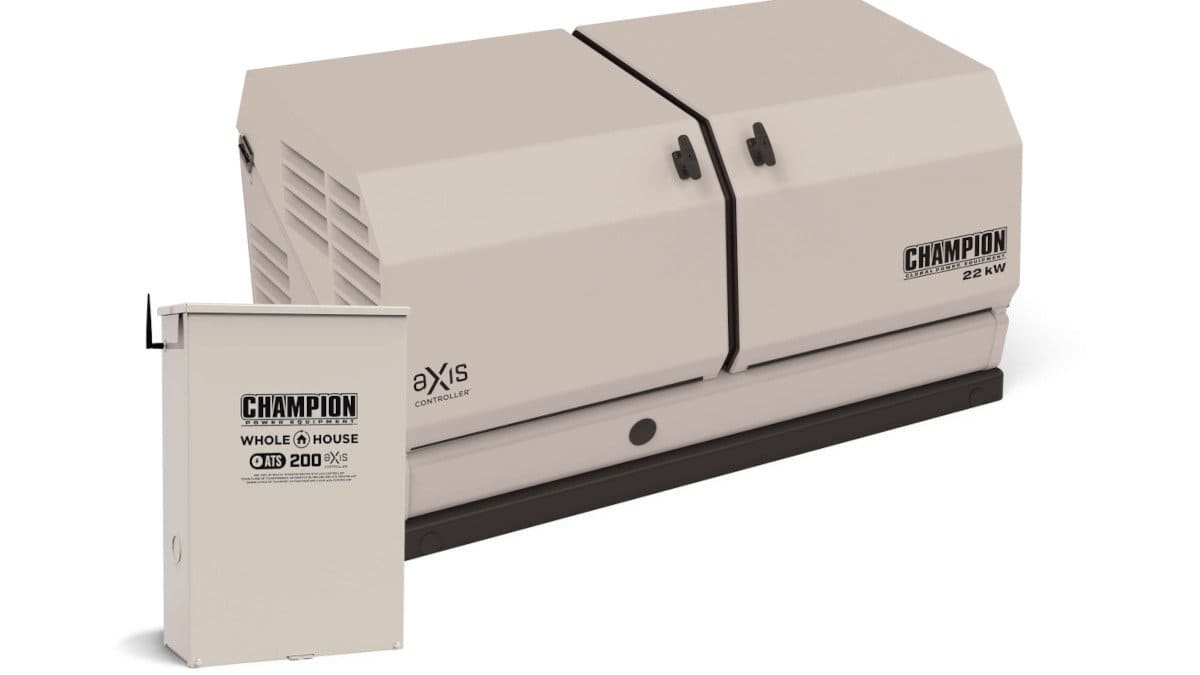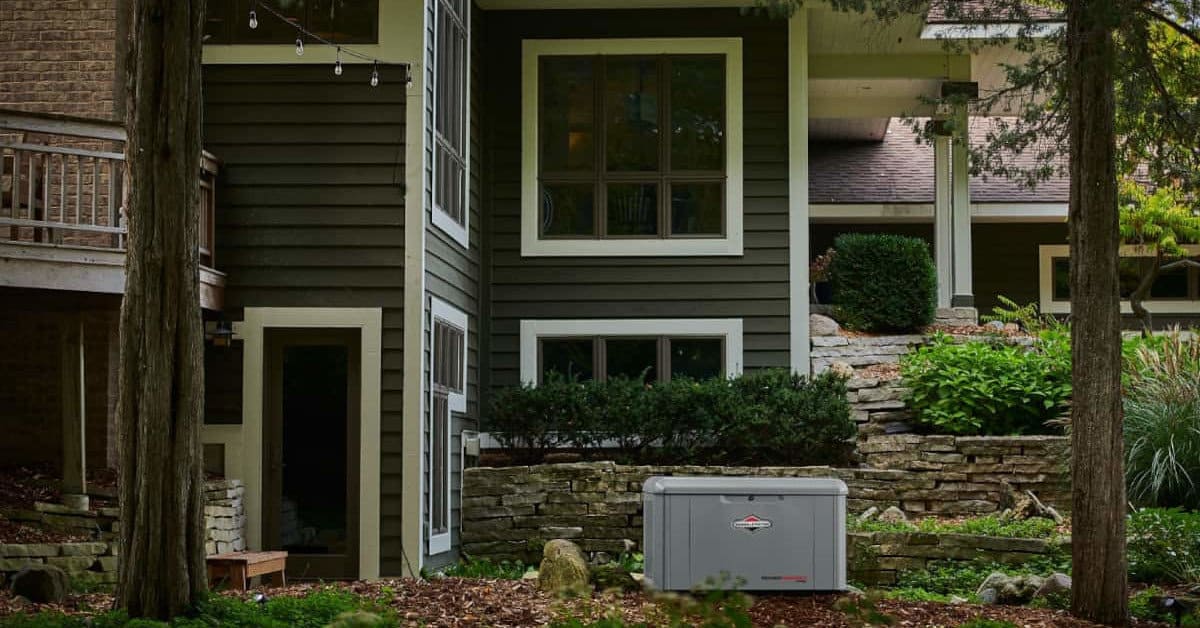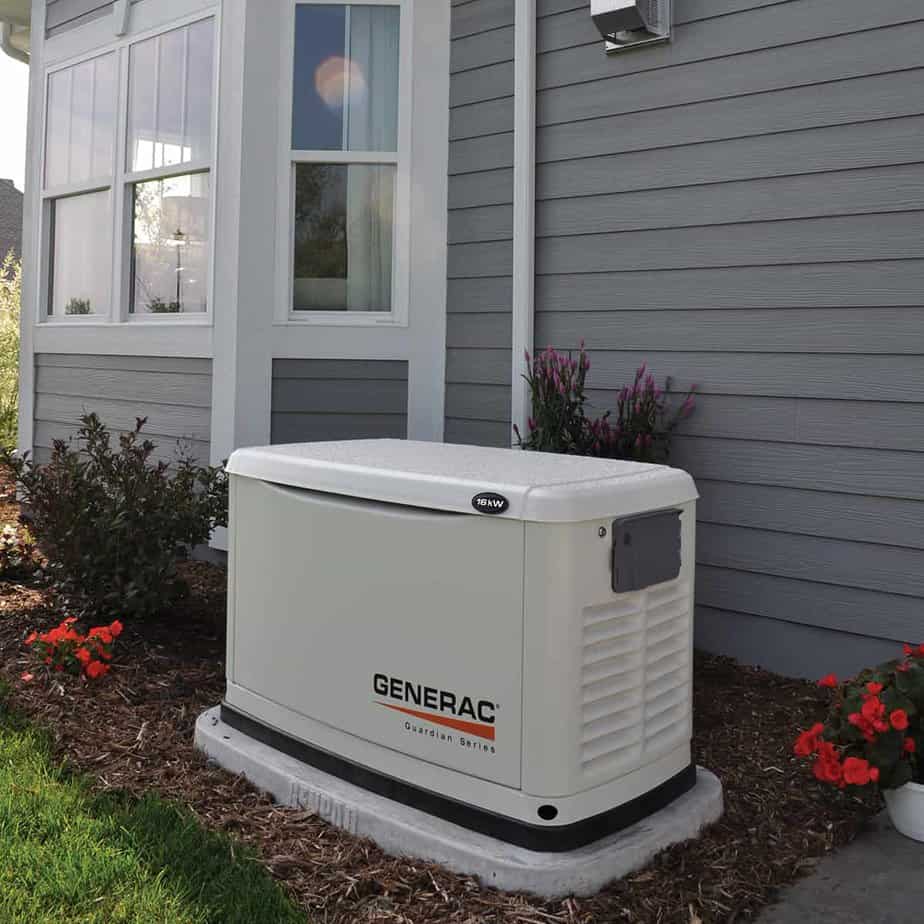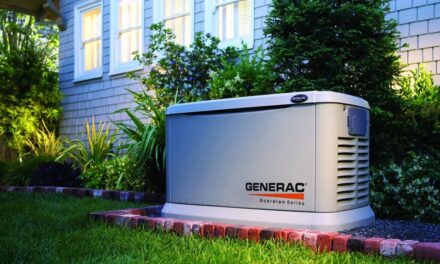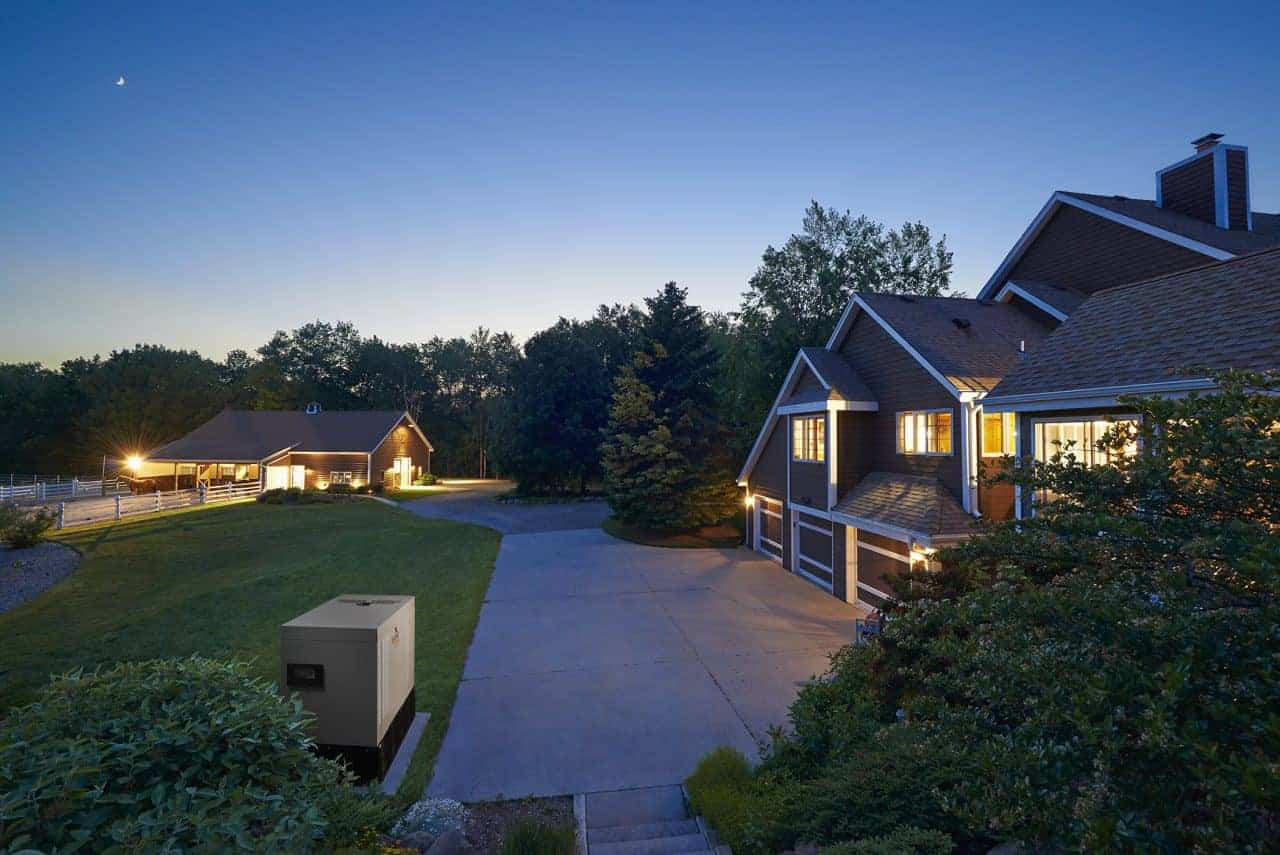A 22kW Home Standby Generator with Automatic Transfer Switch (Next to Meter) with Power Management handles this entire home including three HVAC units.
What Size Generator for a 200 Amp Service?
On the surface, it seems like the answer is obvious. If the electric utility provides your home with 200-Amp service, don’t you need a generator capable of the same capacity to power your house in an outage?
Well, no. If you really need a generator that large, then your 200-Amp utility service is woefully undersized.
Look inside your main circuit breaker panel. In a home with a 200-Amp service, you might see approximately 35-40 circuit breakers. There are probably a few double-pole breakers for 240-volt appliances, but most are 15- and 20-amp circuit breakers for things like your refrigerator, bedroom outlets, lights, and the bathroom. Depending on the age of your home and local building codes, you might find GFCI and AFCI breakers.
Add up all those breaker values and you will find the total is much more than 200 amps. A common 200-amp main panel has 40 spaces for circuit breakers. With tandem breakers, that’s enough room for 80 circuit breakers. Fill each space with a 15-amp tandem breaker and the total is 1200 amps. That would be unusual, but the panel design allows it and the main circuit breaker prevents the total load from exceeding 200 amps—the maximum current rating of the panel.
This provides great flexibility in a modern home. As families grow and change, their power needs change too, but for most, the 200-amp electrical service is all they ever need.
Circuit breakers protect wiring and equipment by preventing currents that exceed the equipment or wiring current rating. The 200 Amp Main Breaker protects the main circuit breaker panel from currents of more than 200 amps.
A 15-amp breaker for a branch circuit protects the wiring and downstream equipment the same way. The two most common circuit breakers in a modern home are 15 amps and 20 amps.
Generator Size for 200 Amp Service
Champion Global Power Equipment is the latest manufacturer to introduce a 22kW Home Standby Generator
An electrician or generator installer will perform a load calculation for your home. The result of a load calculation determines the minimum generator size for 200 amp service without Power management.
Power management assigns priority to heavy loads, like electric dryers and water heaters, heat pumps and central air conditioning, and electric baseboard heating, to name a few. Some well pumps are heavy users of electricity.
For one example, 15,000 watts of electric baseboard heating require about 62 amps, almost a third of a 200-amp service capacity. A 3-Ton central conditioner requires 5000 watts or about 21 amps of current. If the air conditioner is running, we don’t need the baseboard heating, and vice versa. Power management can prevent the baseboard heating and the air conditioner from running at the same time.
A power management system allows a smaller and more fuel-efficient generator to provide power to the whole house. Some loads may wait to run until another heavy load has finished. Perhaps if the Electric Range is in use, the air conditioner might have to wait until more power becomes available. Optionally, the power management system prevents some heavy loads from operating during a power outage.
This type of management is called load shedding. Non-essential loads and lower priority loads are “shed” from the system unless the generator has enough power to run them.
You and your installer or electrician determine which loads have priority over other loads. The installer assigns essential heavy loads a higher priority than non-essential loads in the power management system.
The power management system determines which heavy loads may run based on the generator capacity and the priorities assigned to each heavy load. If, for example, two heavy loads have equal priority, the generator must have enough capacity to start and run both while keeping the rest of the house supplied with power.
Based on the results of the load calculation and the decisions determining load priorities, a whole house generator for 200-amp service that falls into the 17kW to 26kW range may provide enough power for the home and family.
Whole House Generator for 200-Amp Service
Briggs and Stratton Manufactures Home Generators From 10kW to 26kW
One aspect of a whole house generator system that homeowners should not overlook is the Automatic Transfer Switch or ATS and its current rating. The ATS rated amps can cause confusion about what size generator for a 200 amp service.
Whole house generator systems bundle an Automatic Transfer Switch with a Standby Generator. As a rule, the ATS rating must match the service equipment rating. A 200-Amp utility service requires a 200-Amp ATS.
The ATS controls the source of power automatically. During normal operation, power flows from the utility company to the home’s main service panel. It is during normal operation that the full capacity of the ATS is important because the ATS Service Disconnect protects the ATS and the cables from the ATS to the main panel.
During a power outage, the ATS switches the source of power from the utility to the generator. Even if the generator capacity exceeds the utility entrance size, the ATS protects itself, the wiring, and the main panel from loads that exceed its rating.
Your generator installer or an electrician experienced with generator installation uses the load calculation and input from the homeowner regarding power management to determine the correct size generator for 200 amp service.
Tip: Generator manufacturers state capacity based on UL-2200, a standard by Underwriters Laboratories. However, manufacturers may also state that the generator should only run at 80 percent of the rated capacity or less. This makes sense because any machine that runs at maximum capacity has a significantly shorter lifespan than one run at less than maximum. If the load calculation with power management indicates a 17kW generator as the minimum required, expect the installer/electrician to recommend a 22kW, 24kW, or 26kW. All four use the same engine, but the higher capacity models allow for growing families and the ever-increasing need for more power.

